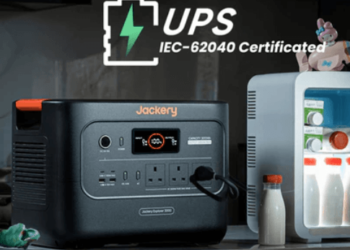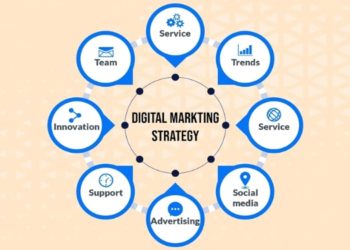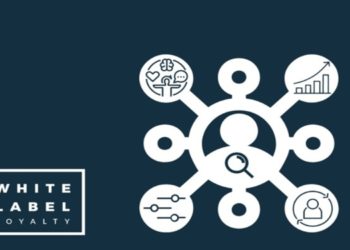Have you ever felt like life is just about getting through the day—surviving instead of truly living? Many people know that feeling. Surviving means doing the bare minimum to keep going, while thriving means living with purpose, joy, and personal growth. The good news is that the bridge between the two is often recovery.
Whether it’s healing from a setback, overcoming challenges, or finding balance again, recovery isn’t just about fixing what’s broken—it’s about unlocking transformation and rediscovering your potential.
When you begin the healing journey, you start to uncover new strength, resilience, and self-awareness. For many individuals, rehab centers play a key role in this process by providing structured guidance, emotional support, and professional care. These environments help you move beyond pain, rebuild confidence, and find meaning in your experiences.
Recovery transforms the way you see yourself, your relationships, and your future. Instead of feeling stuck in old patterns, it equips you with the tools to grow, flourish, and approach life with a renewed perspective.
In this post, you’ll learn how recovery can turn struggle into strength, how setbacks can become stepping stones, and how mindset shifts lead to lasting change. You’ll explore practical tools that make recovery easier, inspiring stories of hope, and simple ways to turn challenges into opportunities for growth.
By the end, you’ll see that survival is only the beginning. Thriving is the destination—and recovery is the path that takes you there.
Understanding Recovery Beyond Survival
When most people think about recovery, they picture it as “getting back to normal.” But the truth is, recovery is not just about survival—it’s about becoming a stronger, wiser, and more resilient version of yourself. It’s the shift from simply holding on to life to actually living it with purpose and joy.
Different types of recovery shape this journey. Physical recovery helps your body heal and regain strength after illness, injury, or other forms of stress. Emotional recovery allows you to release pain, rebuild confidence, and find peace within. Mental health recovery gives you the tools to manage stress, fight negative thoughts, and develop a healthier mindset. Each one plays a role in unlocking personal transformation.
A common misconception is that recovery only means “surviving the hard times.” But in reality, recovery is a path toward growth, self-discovery, and lasting change. It’s about creating new habits, finding balance, and building resilience that carries you through future challenges.
For many people, this transformation begins at home with small steps like practicing mindfulness or self-care. For others, the journey may include seeking help from professionals at rehab centers, therapy, or support groups. The path may look different for everyone, but the purpose remains the same: to move beyond survival and step into a life of thriving.
Recovery is not the end of your story—it’s the beginning of a stronger chapter filled with hope, courage, and growth.
The Link Between Recovery and Personal Transformation
Recovery and personal transformation are deeply connected. When you go through recovery, you are not just healing—you are opening doors to self-discovery and growth. It’s a process that allows you to see who you truly are, what matters most, and how strong you can be.
Many people describe recovery as a turning point in life. It marks the moment when you choose not only to survive but to live differently, with more purpose and clarity. This choice shifts your path and creates room for new opportunities, healthier habits, and deeper connections.
Challenges often feel heavy, but they play a key role in shaping who we become. Every obstacle you face teaches resilience. Every setback you overcome strengthens your mindset. Instead of breaking you, challenges can build you into a more confident and courageous version of yourself. Recovery gives meaning to the struggle by turning pain into wisdom and weakness into strength.
Through this process, you start to realize that recovery is more than fixing what was lost. It’s about creating something better. It transforms your outlook, helps you build resilience, and encourages you to thrive in ways you never imagined.
Recovery is the bridge between who you were and who you can become. It turns challenges into stepping stones and makes transformation possible. And that’s why every recovery journey is not just about healing—it’s about unlocking the power to thrive.
Key Stages of the Healing Journey
Every journey of recovery and personal transformation is unique, but most follow a few key stages that help turn struggle into strength. By understanding these stages, you can see that healing is not a single moment—it’s a process of growth and change.
The first stage is acknowledging pain and struggle. Healing begins when you accept what you have been through instead of ignoring it. Facing your truth is hard, but it opens the door to freedom and growth.
Next comes building resilience through small wins. Recovery doesn’t happen all at once. Every little step—like choosing a positive habit, practicing self-care, or staying consistent—creates progress. These small victories give you confidence and strength for the bigger challenges ahead.
Then there’s embracing vulnerability and self-acceptance. Many people believe they must be strong all the time, but true strength comes from allowing yourself to be real. When you accept your emotions and flaws, you also create space for compassion, healing, and deeper connections with others.
Finally, recovery becomes about finding purpose in the process. You begin to see meaning in your struggles and lessons in your pain. This purpose transforms your outlook and motivates you to keep moving forward, not just for yourself, but often to inspire others too.
The healing journey is not just about surviving—it’s about discovering strength, resilience, and purpose that help you thrive. Each stage brings you closer to a life filled with balance, growth, and transformation.
Practical Ways Recovery Unlocks Transformation
Recovery and personal transformation are not just ideas—they show up in real, practical ways that change how you live. When you choose recovery, you gain tools that help you grow stronger, wiser, and more connected.
One of the biggest shifts is the growth of emotional intelligence. Recovery teaches you to notice your feelings, understand them, and respond in healthier ways. Instead of reacting with anger or fear, you learn patience, empathy, and control. This makes you stronger inside and helps you handle challenges with clarity.
Another benefit is improved relationships and deeper connections. As you heal, you begin to communicate more openly and listen with compassion. Recovery makes space for trust, honesty, and love—qualities that build strong friendships and family bonds.
Recovery also helps you focus on your personal values and authenticity. You start to live in a way that feels true to who you are, rather than chasing what others expect. This sense of authenticity creates confidence and joy in daily life.
Finally, recovery leads to the development of new coping mechanisms and strengths. You discover healthy ways to manage stress, such as mindfulness, journaling, or exercise. These coping tools replace harmful habits and make you more resilient when new challenges arise.
Recovery is powerful because it creates lasting transformation. It doesn’t just heal your past—it shapes your future, helping you thrive with purpose, balance, and strength.
Mindset Shifts That Turn Recovery Into Growth

True recovery and personal transformation happen when your mindset begins to change. It’s not only about healing the body or emotions—it’s about shifting how you see yourself and the world around you. These mindset shifts are what turn simple recovery into lasting growth.
The first shift is moving from victimhood to empowerment. In hard times, it’s easy to feel powerless and stuck. But recovery helps you see that you are not defined by your struggles—you are defined by how you rise above them. Choosing empowerment means taking control of your story and turning challenges into opportunities.
Next is cultivating gratitude and mindfulness. Gratitude allows you to focus on what you have, not just what you’ve lost. Mindfulness helps you stay present instead of worrying about the past or future. Together, they create peace, clarity, and resilience. Even small moments of thankfulness can spark joy and shift your perspective toward growth.
The third shift is adopting a growth mindset after adversity. Instead of seeing failures as the end, you begin to see them as lessons. A growth mindset encourages you to try again, learn from mistakes, and embrace change with courage. It transforms setbacks into stepping stones.
These mindset shifts show that recovery is not just about survival. It is about unlocking strength, hope, and confidence that carry you into a thriving life. When your mind grows, your life transforms.
Tools and Practices for Sustaining Personal Growth

Recovery and personal transformation are not quick fixes—they are ongoing journeys. To keep growing and thriving, you need simple yet powerful tools that build strength over time. These practices help you stay focused, balanced, and ready for new challenges.
One of the most effective tools is journaling and reflection practices. Writing your thoughts, feelings, and progress helps you see how far you’ve come. It gives clarity, builds self-awareness, and allows you to track small victories that lead to big change.
Another tool is seeking support through therapy, support groups, or coaching. Talking with others provides guidance, encouragement, and new perspectives. These safe spaces remind you that you’re not alone and that healing is stronger when shared.
Daily practices like meditation, mindfulness, and simple rituals also play a huge role. Just a few minutes of quiet breathing or reflection can reduce stress, calm the mind, and boost focus. Mindfulness teaches you to stay present and enjoy life’s little moments instead of getting lost in worry.
Finally, recovery lasts when you create a thriving lifestyle that supports long-term transformation. This means choosing habits that align with your values—healthy routines, positive relationships, and time for self-care. When your lifestyle supports growth, transformation becomes part of your daily life, not just a temporary phase.
The right tools keep recovery alive. They turn healing into a lifelong practice and ensure that personal growth doesn’t stop—it keeps expanding.
Overcoming Setbacks on the Journey

When walking the path from surviving to thriving, it’s important to remember that setbacks are normal. They are not signs of failure. Instead, they are part of the recovery journey and can help us grow stronger. Just like when you fall while learning to ride a bike, you get up, try again, and soon ride better than before.
Setbacks may feel heavy at first. Yet, they give us a chance to build resilience. Resilience means bouncing back with courage and hope. Every time you rise after a fall, you show yourself that you are capable. This confidence keeps you moving forward.
Instead of fearing challenges, try to reframe setbacks as stepping stones. Each challenge carries a lesson. Maybe it teaches patience, maybe it builds strength, or maybe it helps you see a new direction. When you shift your view, setbacks turn into opportunities for personal transformation.
To stay steady, remind yourself daily that growth is not a straight line. Ups and downs create balance. With reflection, support, and positive rituals, you can keep moving ahead, even after hard days.
So, whenever you face a setback, pause, breathe, and remember: every setback is a setup for growth. It’s part of the bigger story that turns survival into true thriving.
From Thriving Individually to Inspiring Others

When you move from surviving to thriving, the change does not stop with you. Personal transformation creates a ripple effect. It touches your family, friends, and even your community. People notice your courage, and it encourages them to believe in their own strength too.
As you grow, you naturally become a role model for resilience. Others see how you faced struggles and still kept moving forward. This inspires them to stay strong in their own recovery journey. Your progress shows that healing and growth are possible for everyone.
One of the most powerful ways to inspire is by sharing your story. When you speak about your recovery, you give others hope. Your words can guide someone who feels lost. They may think, “If they can do it, maybe I can too.” In this way, your journey becomes a light for others walking the same path.
Thriving individually is the first step. But when you use your lessons to support others, you build a community of healing. Your transformation becomes a tool for collective growth.
So remember: your recovery is not just about you—it’s about lifting others too. When you thrive, you inspire, and when you inspire, you create change that lasts.
Embrace Recovery, Embrace Transformation
As we reach the end of this journey, remember one important truth: recovery is not the finish line—it’s the starting point of a new, thriving life. Surviving means you made it through the hard times. But thriving means you are now growing, shining, and creating a better version of yourself. Recovery is the bridge that takes you from pain to purpose, from struggle to strength, and from surviving to thriving.
Think about your own story. Where have you been surviving? And where could recovery unlock your personal transformation? Take a moment to reflect. Each small step you take on your healing journey—whether it’s practicing self-care, building resilience, or embracing new goals—moves you closer to living with joy, balance, and confidence.
The beauty of recovery is that it teaches us resilience, courage, and hope. It shows us that setbacks are not the end. They are stepping stones to something greater. With every challenge, you gain wisdom. With every moment of healing, you build strength. And with every choice to keep moving forward, you create the life you were meant to live.
Now it’s your turn. What does recovery mean to you? Share your experiences, lessons, or reflections in the comments below—we’d love to hear your story. If you found this post inspiring, subscribe for more empowering content on growth, resilience, and transformation. Or better yet, start today: pick one small recovery practice—like journaling, meditation, or simply practicing gratitude—and watch how it helps you thrive.
Remember: recovery is the path, and transformation is the reward. Your thriving life starts now.











































































